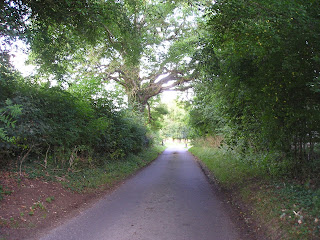Images at Easter
Primroses and violets are the traditional wild flowers of Easter and our lawn is dotted with dozens of them. We avoid mowing them when in flower, after that we don't worry yet the numbers increase with every passing year.


 The Snake's Head Fritillary, Fritillaria meleagris, is an extremely rare plant in the wild although there are water meadows around Oxford and the Cotswolds where they carpet the ground - a spectacular sight. Fortunately, they grow quite easily in our gardens and the corms are readily available from reputable bulb merchants, who only source them from grown stock. Sadly, there are still occasions when bulbs and corms are marketed from illegally collected wild stock.
The Snake's Head Fritillary, Fritillaria meleagris, is an extremely rare plant in the wild although there are water meadows around Oxford and the Cotswolds where they carpet the ground - a spectacular sight. Fortunately, they grow quite easily in our gardens and the corms are readily available from reputable bulb merchants, who only source them from grown stock. Sadly, there are still occasions when bulbs and corms are marketed from illegally collected wild stock.
They make fine, if somewhat short-lived house plants. We like to have them indoors at Easter and they can afterwards be planted in the garden to bloom again another year. When seen close-up, it is obvious from their markings why one old name that country folk give to them is Chequers.
 It is not only flowers at Easter that should be thriving. The wild birds are singing and building their nests and sheltered beneath a large clump of Oat Grass, the wild Mallard duck, lay their eggs each year in our garden. As soon as they hatch, their mother leads them to the safety of the river below the house.
It is not only flowers at Easter that should be thriving. The wild birds are singing and building their nests and sheltered beneath a large clump of Oat Grass, the wild Mallard duck, lay their eggs each year in our garden. As soon as they hatch, their mother leads them to the safety of the river below the house.

This is the joy of Easter - or it usually is. Not in 2010. The primroses and violets may be blooming but the weather is more of winter than spring with the season up to six weeks behind this year. There is hardly a leaf showing on the trees and bushes of the secret valley and the river has burst its banks with the continuous rain we have had the past few weeks. Any duckling that ventured onto the water would soon be swept away in the torrent our gentle stream has become.
However, She-dog is thoroughly enjoying running through the flood waters - especially where it is shallow enough to admire her reflection!




Violets and ducklings. Both say "Spring" in ways that words cannot. Does She-dog venture into the water?
ReplyDeleteDear Johnson, This is such a heartening posting for the start of a new year which, as you say, is several weeks behind what is normally to be expected. However, as far as the weather is concerned, one increasingly wonders what is meant by 'normal'.
ReplyDeleteThe swollen river looks quite alarming and it is easy to see how very quickly water can become a very dangerous element. But the image of the mother duck with her family is lovely. That said I am told that ducks are poor mothers, often abandoning their young. Is this so?
I so enjoyed your images at Easter ... loved the primroses and violets and the wood anemone is beautiful.
ReplyDeleteSorry to hear about weather ... sounds a bit like the weather we've been experiencing here. It's rather unusual autumn weather for us ... and unusual spring weather for you.
Beautiful pics and a lucky She-Dog ;)
ReplyDeleteIt does seem that the weather is behaving strangely all over the world at the moment. Of course, although we here in the UK are complaining this is what winter and early spring always used to be like. We've just got used to having mild winters in recent years.
ReplyDeleteNoelle - She-dog does swim but only when she is desperate. She can jump across our little river without getting wet. Previous lurchers have also disliked getting 'into' the water. They have all loved galloping through the shallows, 'though.
Edith - I have always understood that ducks make bad mothers and it is traditional to hatch them out beneath bantam hens. Often, once the ducklings reach the river, most disappear, probably eaten by herons or pike or taken by hawks, perhaps.
Bernie & Elizabeth - thanks, also for your comments. So pleased that you enjoyed the pics.
Johnson
I'm loving those violets! soooo sweet!
ReplyDeletespring seems so late this year, I'm really behind with the garden, can't quite beleive it's April already. Love the pics of fritillaries, reminds me I must get over to see the display in North Meadow at Cricklade,Lovely post thanks.
ReplyDeleteHi Johnson, I've been out of town and so am getting caught up on your posts - I love the spring theme and the photos of the flowers in particular. I did not know about "indicator plants" - fascinating!
ReplyDeleteThanks for the comments. I, too, find the idea of 'indicator' plants helping to confirm the age of woodlands fascinating. I might try and get photos of more species and do a post on them one day, so watch this space, as they say!
ReplyDeleteJohnson